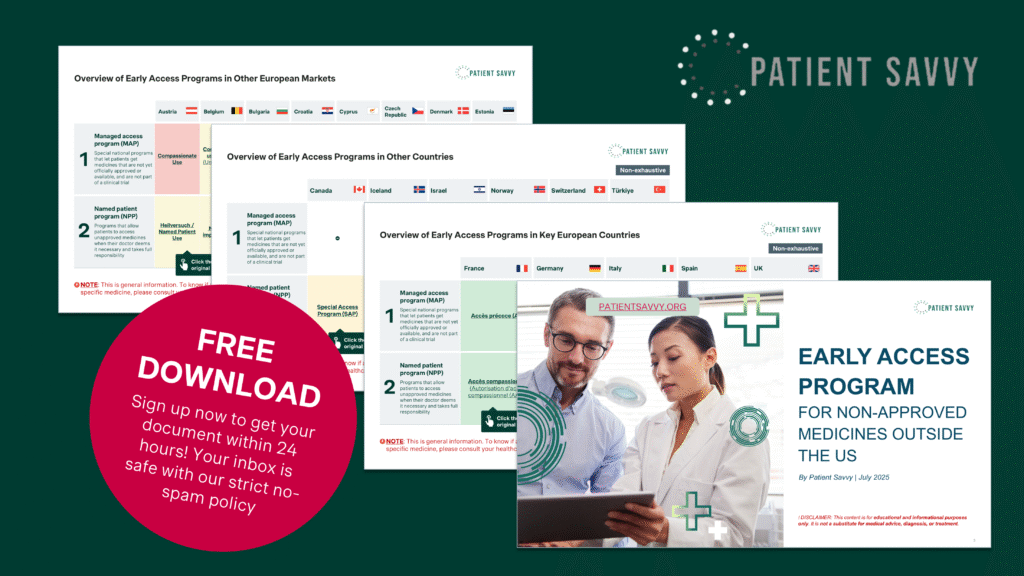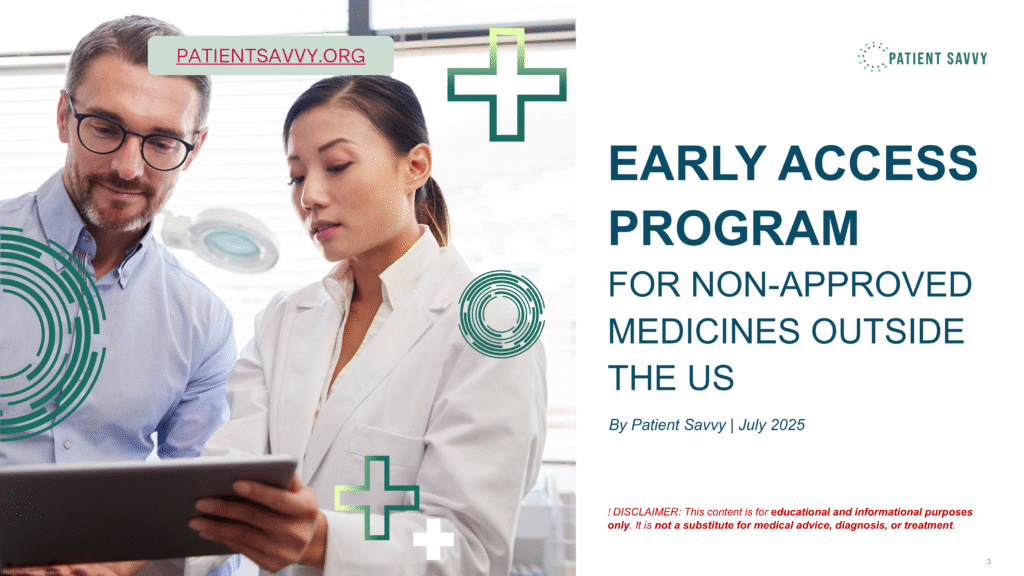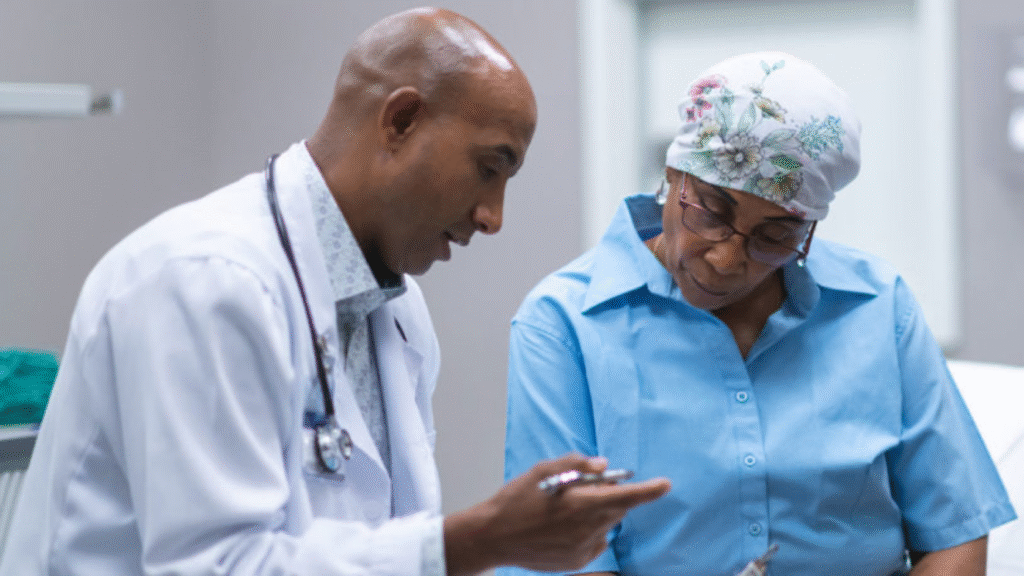When a groundbreaking cancer treatment receives FDA approval in the United States, patients worldwide often face a long, frustrating wait before gaining access. Typically, this delay ranges from several months to even several years, causing significant distress for patients urgently needing these innovative therapies—particularly those with advanced cancer and limited treatment options (e.g., Dato-DXd approved in June 2025 for NSCLC). Early Access Programs (EAPs) provide a valuable solution, helping patients access new treatments even before official approval in their home countries. This article discusses these programs globally and outlines proactive steps patients and caregivers can take.
The Gap Between U.S. Approvals and Global Access
A significant time lag exists between FDA approval of new oncology drugs in the U.S. and their availability in other countries. According to a 2022 analysis by IQVIA, the average time for oncology drugs approved by the FDA to become available in major European markets (Germany, France, the United Kingdom, Italy, and Spain) ranges from 12 to 24 months. Longer delays occur in regions like Asia and Latin America; for instance, China historically takes 18 to 36 months post-FDA approval to introduce these medications.
This delay has severe implications for patients with advanced cancer, where months significantly affect outcomes and survival rates. Recognizing this critical gap, Early Access Programs have become vital for many patients outside the U.S.
What Are Early Access Programs (EAPs)?
Early Access Programs enable patients to access new, innovative treatments before official approval in their home countries. These programs are especially valuable in oncology, where new medications often significantly improve treatment efficacy, offering hope to patients with limited alternatives.
Common EAP types familiar to patients and caregivers include:
Managed Access Programs (MAPs): These structured programs, typically sponsored by pharmaceutical companies, allow early access to medications for specific patient groups based on clear eligibility criteria. MAPs generally involve larger patient groups across multiple countries.
Named Patient Programs (NPPs): These are case-by-case initiatives allowing individual patients to gain access to unapproved medications. Healthcare providers typically initiate NPP requests directly with pharmaceutical companies, often when no clinical trial or larger managed access is available or applicable.
However, the availability of these programs depends significantly on several factors, such as:
- Pharmaceutical companies’ willingness and capability to provide early access.
- Availability of robust clinical data demonstrating drug safety and efficacy.
- Economic and operational feasibility of medicine delivery in specific regions.
- Regulatory frameworks and the willingness of health authorities in specific countries.
You can download a FREE overview of Early Access Programs in selected markets below. The document provides details, including (1) program names, (2) patient payment requirements, and (3) direct links to original documents outlining clear eligibility criteria.

SIGN UP BELOW to get the document within 24 hours! Your inbox is safe with our strict no-spam policy
How Patients and Caregivers Can Proactively Engage with EAPs
Early Access Programs often operate on a smaller scale and are highly selective. Therefore, patients and caregivers should proactively prepare, ideally before their health situation becomes critical. Here’s a practical approach:
Step 1: Identify Potential Treatments
- Research diligently: Stay informed about the latest treatments relevant to your cancer type, subtype, stage, or previous lines of therapy through trusted sources such as reputable cancer organizations, patient groups, medical journals, and oncology-specific news outlets.
- Engage your healthcare team early: Discuss potential future treatment options and stay updated on their approval status. It’s critical to note that EAPs typically cover treatments with substantial clinical data (such as those approved by the FDA based on Phase 2 or Phase 3 trials) rather than early-stage experimental drugs.
Step 2: Discuss EAP Possibilities with Your Healthcare Team
- Engage your oncologist: Directly discuss the possibility of accessing specific drugs through EAPs. Confirm your eligibility and your physician’s ability to participate.
- Understand physician limitations: Not all doctors have equal access to EAPs. For instance, in Canada, access to treatments under the Special Access Program (SAP) is limited to healthcare professionals with prescribing privileges in their respective provinces.
- Consult specialized centers: If your primary oncologist lacks information, reach out to specialized cancer centers or hospitals known as Centers of Cancer Excellence. These institutions generally have greater awareness of clinical trials, new therapies, and available EAP pathways.
If you have any questions about Early Access Program, join our private Facebook group “Trusted Cancer Support – Q&A and Inspiring Stories” for answers , guidance through your cancer journey, and more information.
Step 3: Engage in the Application Process
- Prepare documentation promptly: Once you identify an appropriate EAP and confirm eligibility, work closely with your healthcare team to complete all necessary documentation swiftly. Delays in paperwork can significantly impact the speed of access.
- Financial considerations: Some EAPs require patients to cover costs out-of-pocket or undergo individual financial assessments (see more information in the free downloadable document). Clarify these details with your healthcare team early to avoid unnecessary delays.
Realistic Expectations and Advocacy
While Early Access Programs are valuable, they have inherent limitations, such as selective eligibility and potential financial burdens (if treatments are not fully covered by pharmaceutical companies or healthcare systems). Additionally, program availability and comprehensiveness vary widely across different regions.
Patients and caregivers should advocate for faster local regulatory processes and broader availability of innovative treatments. Engaging patient advocacy groups can amplify your voice, raising awareness about the urgency and critical need for these therapies.
Final Thoughts
Early Access Programs represent a beacon of hope for patients facing critical timelines in their cancer journeys. However, approaching these opportunities proactively—armed with thorough research, clear communication with healthcare providers, and strategic planning—is essential.
Ultimately, genuinely transformative oncology treatments eventually become widely accessible due to their immense benefits to patients and healthcare systems. Until universal access becomes a reality, Early Access Programs remain crucial lifelines offering patients precious time and hope.



